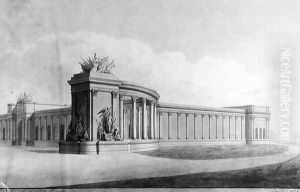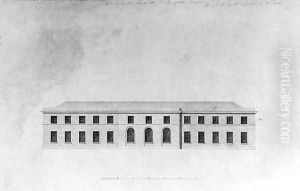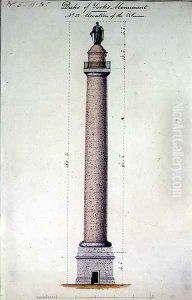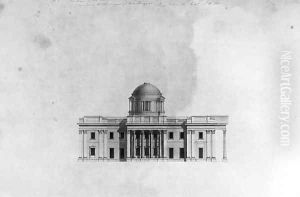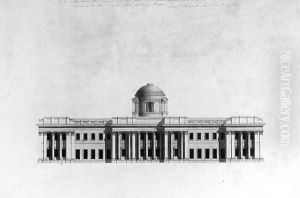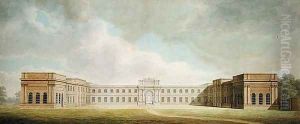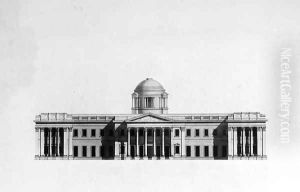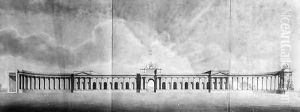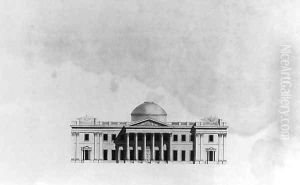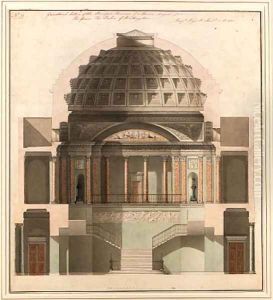Benjamin Dean Wyatt Paintings
Benjamin Dean Wyatt was an influential British architect during the late 18th and early 19th centuries. Born into a family with a strong architectural background, his father, James Wyatt, was one of the most renowned architects of his time, which undoubtedly influenced Benjamin's career path. Benjamin Dean Wyatt is best known for his work on the restoration and remodeling of several significant buildings in England, including the interior design of the famous Apsley House, home of the Duke of Wellington, and his work on Windsor Castle.
Wyatt's architectural style was largely influenced by the neoclassical movement, which was predominant during his time. However, he was also known for his adaptability and for incorporating elements of the Gothic revival into some of his works, showcasing his versatility as an architect. Despite being in the shadow of his father's towering reputation, Benjamin managed to carve out his own niche in the architectural world through his innovative designs and meticulous attention to detail.
One of Benjamin Dean Wyatt's most notable projects was the Duke of Wellington's residence, Apsley House, located at Hyde Park Corner in London. He was commissioned to remodel the house in the early 19th century, transforming it into a grand mansion that reflected the status and achievements of its owner. Wyatt's work on Apsley House is considered one of his masterpieces, demonstrating his skill in creating luxurious and elegant interiors.
In addition to his architectural achievements, Benjamin Dean Wyatt also faced controversies and professional challenges. His involvement in the rebuilding of Drury Lane Theatre was met with mixed reviews, and his career had its ups and downs due to financial mismanagement and professional disputes. Despite these setbacks, Wyatt's contributions to British architecture remain significant, and his works continue to be celebrated for their beauty and historical importance.
Benjamin Dean Wyatt's legacy is a testament to his architectural genius and his ability to leave a lasting impact on the built environment. He died in 1850, leaving behind a body of work that continues to be admired by architects, historians, and the public alike.
